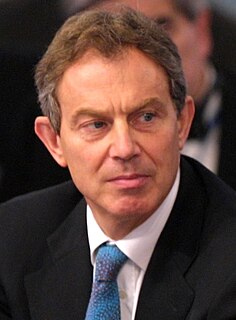The Lord President's Committee was a United Kingdom cabinet committee during the Second World War. This committee oversaw many aspects of home affairs, most notably the economy, and was vital to the smooth running of the British war economy and consequently the entire British war effort. Because of this it was always headed by a senior politician and became one of the responsibilities given to successive Lord Presidents of the Council. These were:

The British government is directed by the Cabinet, a group of senior government ministers led by the Prime Minister. Most of the day-to-day work of the Cabinet is carried out by Cabinet committees, rather than by the full Cabinet. Each committee has its own area of responsibility, and their decisions are binding on the entire Cabinet.

World War II, also known as the Second World War, was a global war that lasted from 1939 to 1945. The vast majority of the world's countries—including all the great powers—eventually formed two opposing military alliances: the Allies and the Axis. A state of total war emerged, directly involving more than 100 million people from over 30 countries. The major participants threw their entire economic, industrial, and scientific capabilities behind the war effort, blurring the distinction between civilian and military resources. World War II was the deadliest conflict in human history, marked by 70 to 85 million fatalities, most of whom were civilians in the Soviet Union and China. It included massacres, the genocide of the Holocaust, strategic bombing, premeditated death from starvation and disease, and the only use of nuclear weapons in war.

The Lord President of the Council is the fourth of the Great Officers of State of the United Kingdom, ranking below the Lord High Treasurer but above the Lord Privy Seal. The Lord President usually attends and is responsible for presiding over meetings of the Privy Council, presenting business for the monarch's approval. In the modern era, the holder is by convention always a member of one of the Houses of Parliament, and the office is normally a Cabinet post.
- Neville Chamberlain (11 May 1940 – 3 October 1940)
- Sir John Anderson (3 October 1940 – 24 September 1943)
- Clement Attlee (24 September 1943 – 23 May 1945)

Arthur Neville Chamberlain was a British Conservative statesman who served as Prime Minister of the United Kingdom from May 1937 to May 1940. Chamberlain is best known for his foreign policy of appeasement, and in particular for his signing of the Munich Agreement in 1938, conceding the German-speaking Sudetenland region of Czechoslovakia to Germany. When Adolf Hitler invaded Poland, the UK declared war on Germany on 3 September 1939, and Chamberlain led Britain through the first eight months of the Second World War.

John Anderson, 1st Viscount Waverley, was a British civil servant and politician who is best known for his service in the Cabinet during the Second World War, for which he was nicknamed the "Home Front Prime Minister". He served as Home Secretary, Lord President of the Council and Chancellor of the Exchequer. Anderson shelters are named after him.

Clement Richard Attlee, 1st Earl Attlee,, was a British Labour Party politician who was Prime Minister of the United Kingdom from 1945 to 1951.













